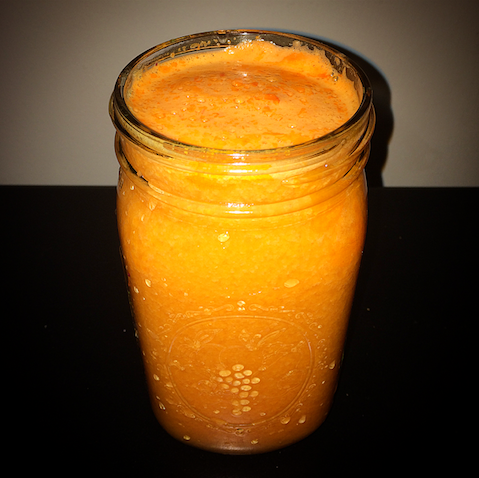Juicing is the best way to get in more fruits and veggies!!! Especially if it is difficult for you to eat the recommended daily intake.
According to
ChooseMyPlate.gov, the recommended daily intake for
fruits and vegetables are:
Women
19 - 30 years old Vegetables: 2-1/2 Cups Fruit: 2 Cups
31 - 50 years old Vegetables: 2-1/2 Cups Fruit: 1-1/2 Cups
51 + years old Vegetables: 2 Cups Fruit: 1-1/2 Cups
Men
19 - 30 years old Vegetables: 3 Cups Fruit: 2 Cups
31 - 50 years old Vegetables: 3 Cups Fruit: 2 Cups
51 + years old Vegetables: 2-1/2 Cups Fruit: 2-1/2 Cups
Juicing
- Wash all fruits and vegetables thoroughly to remove all dirt or pesticides.
- Cut food just before you juice because foods start losing nutrients once they are cut.
- Drink the juice as soon as possible. The longer the juice sits, the more nutrients it loses. If you want to make juice for the next day or later in the day, store in an air tight container such as a Mason jar. Fill the jar as close the to top as possible. The less air the better. Air is about 20% oxygen, which is what destroys juice. Try to drink juice within 24 hours.
Tips:
- Add fruit to vegetable juice to add flavor, sweetness, and eliminate the bitterness of the vegetables.
- Juice less fruit if you want to avoid consuming too many calories. Vegetables have far fewer calories than fruit.
- Choose organic whenever possible. See Dirty Dozen and Clean Fifteen below.
- Though juice has no fiber, the fiber can be added to other foods, such as salad, soup,
smoothies, rice, pasta, muffins, broth, etc. to add more fiber to your
meals.
- Juice has little fiber, protein, and no fat, therefore, not a complete meal.
Before:
- Juicers may be difficult to clean so try lining the pulp catcher with a plastic bag so you have one less piece to clean.
- Know how to juice each food properly.
- Ask your doctor before you start juicing. Some fruits may affect medications or illnesses.
During:
- If pulp is still very moist, try running the pulp through the juicer again.
After:
- Clean juicer right away to prevent food from hardening and molding.
- Enjoy over ice.
- Try freezing juice and thawing in the fridge when ready to drink.
On the road:
- When traveling, find a juice bar.
- Bring an ice chest and pack your own juice.
How to tone down the flavor of vegetable juice.
- Lemons and limes - Lemons and limes have fewer calories than most fruit and help tone down the strong flavor of some vegetable juices.
- Cranberries - Cranberries have five times more antioxidants than broccoli. Antioxidants help protect against cancer, strokes, heart disease, and help with urinary tract infections.
- Ginger - Ginger gives your juice some spice. It also helps with cardiovascular health and lowering cholesterol.
Why juicing is so great!
- Cooking and processing foods destroy micro nutrients and if you have trouble eating raw fruits and vegetables, juicing is a great alternative to eating more raw fruits and vegetables.
- Juicing "pre-digests" food and therefore, helps your body absorbs more of the nutrients.
- Juicing helps you eat a greater variety of fruits and vegetables.
- Although juicing eliminates the fiber, the fiber can still be used in other foods.
Dirty Dozen and Clean Fifteen
Dirty Dozen
Apples
Strawberries
Grapes
Celery
Peaches
Spinach
Bell pepper
Nectarines
Cucumbers
Tomatoes
Potatoes
Blueberries
Clean Fifteen
Avocado
Sweet corn
Pineapple
Cabbage
Sweet peas
Onion
Asparagus
Mango
Kiwi
Eggplant
Grapefruit
Cauliflower
Sweet potato
Watermelon
Honeydew melon
Sources:
WebMD, RebootWithJoe, Mercola, DrWeil, FullyRawKristina











